Legal Hackathon Wales - Team 2 Challenge
It’s been a busy few months at the LILW, and the time finally came for our long anticipated event, Legal Hackathon Wales, which was hosted by the LILW and the Welsh Government.
We’re always up for a good challenge, and luckily the hackathon which made up the second half of the week provided us with 5 challenges we could sink our teeth into.
To get started, all the participants were split into two teams, so we had time to introduce ourselves and our skillsets before discussing which challenge our team wanted to complete. Team 2 were made up of participants from both the LILW and the Welsh Government and the diversity in our backgrounds stood us in good stead to tackle problems from a number of perspectives. With a shared interest in the language of legislation, it wasn’t long before we decided to tackle the first challenge:
“The challenge is to help people understand how any particular item of legislation, such as an Act of a Parliament or a Statutory Instrument made by Ministers, is structured and organised – and what commonly occurring key terms and concepts mean. These include (as examples) titles of legislation, how legislation is sub-divided (for example into “Parts” and “sections”) and how Schedules are often used, the relationship between the sub-divisions of legislation, how definitions are used and when legislation takes effect.”
When considering possible solutions to the problem, one of the most important factors was the end user. During the initial stages of our discussion, our team decided that the end user should be a Law A level student, as this would mean that they have a basic understanding of legislation, as well as the desire to learn more. We did, however, amend this to cover a wider demographic. We landed on a member of public with limited experience of legislation who wants to understand what the law is and what it means for them.
Once our end user was established, the team started discussions surrounding what the aim of our solution should be. With this in mind, we decided that our product should meet the following objectives:
Needs to explain the structure of legislation at a basic level
Needs to provide a tool to increase the user’s confidence when reading legislation
Needs to be engaging and easy to follow
So now we had our end user, and some guidance as to the objectives that the solution should meet. After discussing this further, we started to flesh out the idea of a tool that could be hosted on the Law Wales website to guide users through any given Act.
To expand on this further, we considered the following:
We examined samples of legislation to identify the most common barriers – those with legal experience in the group had to explain component parts, while others in the team highlighted complex terms.
We used this information to identify potential barriers to understanding what the law is and how this may affect users.
We identified and evaluated existing resources (Cyfraith Cymru / Law Wales and legislation.gov.uk). These were basic and in written format only, limiting engagement and interactivity of the resources.
We wanted to create a resource that could be made publicly available immediately and which also had development potential.
So, ‘what was our end product’? I hear you ask. We created a video guide which walked through an example Act and highlighted general areas which may cause confusion for our end user. The guide, with a few adjustments, was complete with voiceover, and was an example of a guide that could be hosted on the Law Wales website. In terms of further development, our team wished to complete a more comprehensive glossary tool which would be available to use on the Law Wales website. The tool would have audio and text options, to provide further information on aspects of the legislative structure that users with only basic knowledge may not understand without additional guidance.
Here’s a snippet illustrating what this might look like when the user opens an Act:
Figure 1: tool with audio and text options turned off (this may be necessary if the user has a better understanding of legislation).
Figure 2: tool with text and audio functions turned on (this would present the information in text format while giving a voiceover).
We believe that these solutions not only met each of our objectives for the challenge, but also help to solve the overall problem of improving accessibility of legislation, particularly for those who do not have a solid understanding of legislative structures.
Following the event, it was interesting to reflect on what we were able to achieve, particularly as it was the first hackathon we’ve hosted and attended as a team. Personally, I think the most valuable aspect of the event was the opportunity to work with people from completely different backgrounds who, otherwise, we may never have worked with. Too often, our work is limited by our own skillsets and experience, and it’s amazing to see where you can get in a matter of days when you are able to work outside of your comfort zone. I look forward to similar events in the future!
Watch our presentation of our solution here:



